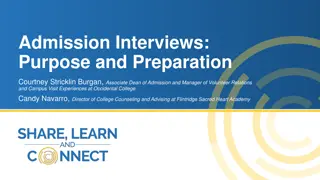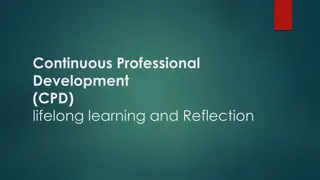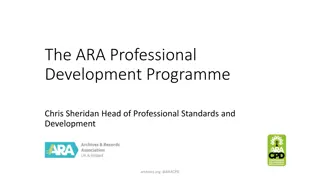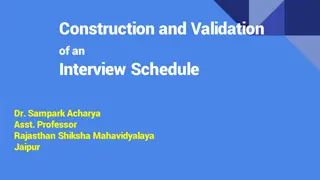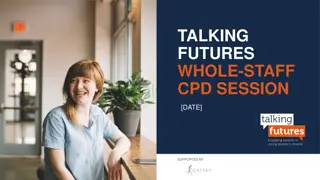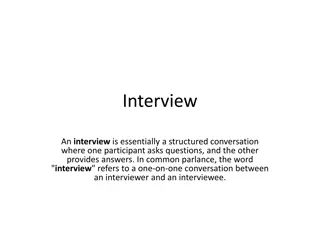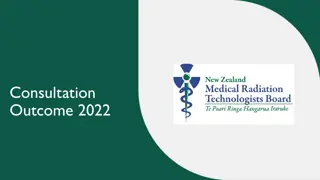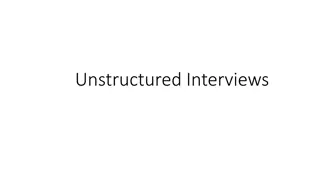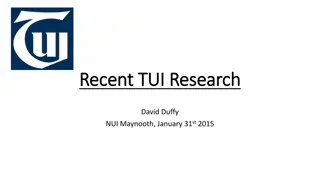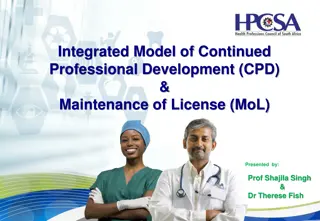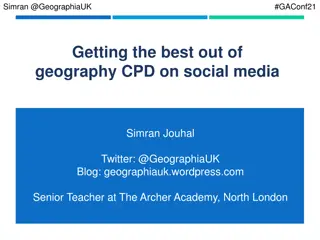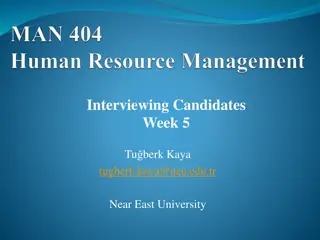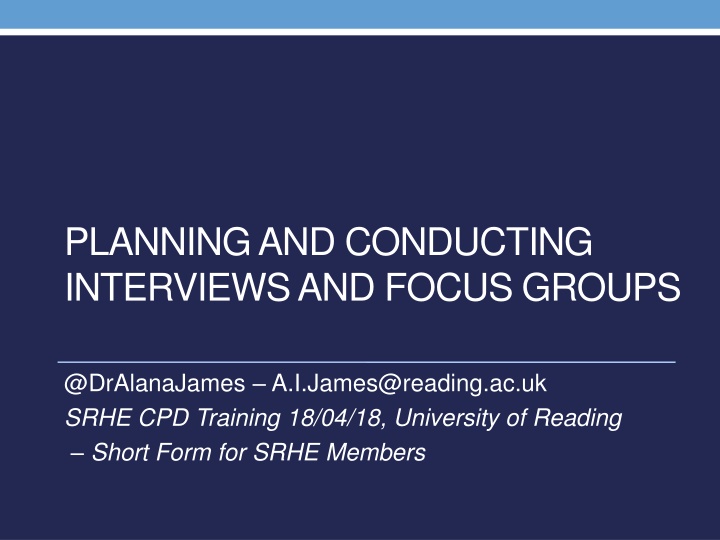
Effective Strategies for Interviews and Focus Groups
Enhance your research skills by learning how to plan and conduct interviews and focus groups effectively. Explore various types of interviews, such as semi-structured, unstructured, and structured, along with the benefits of focus groups. Understand the importance of selecting the right approach based on your research aims and data collection needs. Dive into the world of homogenous versus heterogeneous focus groups and discover tips for conducting successful interviews and group discussions.
Download Presentation

Please find below an Image/Link to download the presentation.
The content on the website is provided AS IS for your information and personal use only. It may not be sold, licensed, or shared on other websites without obtaining consent from the author. If you encounter any issues during the download, it is possible that the publisher has removed the file from their server.
You are allowed to download the files provided on this website for personal or commercial use, subject to the condition that they are used lawfully. All files are the property of their respective owners.
The content on the website is provided AS IS for your information and personal use only. It may not be sold, licensed, or shared on other websites without obtaining consent from the author.
E N D
Presentation Transcript
PLANNING AND CONDUCTING INTERVIEWS AND FOCUS GROUPS @DrAlanaJames A.I.James@reading.ac.uk SRHE CPD Training 18/04/18, University of Reading Short Form for SRHE Members
Choosing the right type of interview or focus group
Interviews/focus groups Conversations where interviewer(s) aims to elicit information from interviewee(s)
Research aims Data collection Item generation or validation Generation of hypotheses Exploration of meaning, processes Typically used in qualitative research - but can yield quantitative data too
Semi-structured - Flexible question wording/order - Responses open - Interaction and clarification - Can add/remove questions between participants Unstructured - No set questions or order - Responses open - Interaction and clarification - Can add/remove questions between participants Structured - Fixed question wording/order - Responses limited - Little interaction - Little variation - E.g. market research Level of structure Linked to the type of data and the types of research questions E.g. Berg (2007)
Focus groups Participant interaction is another source of data Similar to semi-structured interviews The researcher will guide the process Introduces topics and questions Steers group, managing interactions Less artificial than a 1:1 interview Less appropriate for sensitive or intimate topics
Types of focus groups Homogenous vs. Heterogenous Participants share key features vs. participants are different Pre-existing group vs. New group E.g. friends/colleagues vs. people who have never met Concerned vs. Na ve Subject matter is important to them vs. no particular connection to the subject matter Willig (2008)
Interviews (1:1) Focus groups (up to 7-10) interviewer questions -> more control potentially rich in detail dyadic interaction -> more disclosure individual structures of reasoning moderator facilitates -> more genuine social interaction may be quicker and more economical generate high consensus see interpersonal and rhetorical processes Pros Depth ------------ vs. ------------Breadth Cons less control group dynamics can distract practicalities can be challenging less detail yielded time-consuming artificial situation low consensus tiring depends on rapport
Social identities Interviews and focus groups are interpersonal exchanges Characteristics and identities will influence the exchange Data produced will be affected by who takes part Being aware of this linked to ethical responsibility
Ethical issues (not an exhaustive list!) Who is potentially excluded? Social dynamics Sensitive topics Potential outcomes Confidentiality and safeguarding Minimising distress might include: confidentiality reassurances, question order, interviewer skills, support details, opportunities to clarify or withdraw
Planning process Define aims of research Decide whether interviews/focus group appropriate If so, which level of structure? Define who would be appropriate participants Is interview/focus group appropriate for them? Define aims of course of interviews/focus groups And aims of each single interview/focus group Develop schedule (the questions)
Designing interview schedules
Interview schedules Semi-structured interviews/focus groups use a guide Called an interview schedule or an interview agenda Small number of open-ended questions Encourage interviewee to talk about relevant concerns Non-prescriptive May skip questions if participant covers them elsewhere May add some questions to explore interesting things that come up during the interview
Designing schedules Conceptualise research aims and define question(s) Consider appropriate sequence of topics Broad range of topics to be covered Develop appropriate questions for each topic Develop possible probes/prompts for questions Review and re- order if needed
Question number and order Coverage Time Demographic during interview or in questionnaire? Opening Middle Ending Order
Types of questions Descriptive ask participants to give a general account of something Structural find out about the way a participant makes sense of the world, the frameworks they use to think about the world Contrast prompt participant to compare events and experiences Evaluative ask how a participant feels towards something Spradley (1979, as cited in Willig, 2008)
Prompts/probes Encourage participant to say more Might cover a different aspect of the research topic Provide alternative phrasing which might be more meaningful to the participant Flexible use interviewer can decide when to use
Question wording tips Should be: Accurate Motivating Clear Relevant to aims Neutral Have shared meaning Should not be: Affectively worded Double- barreled/complex Leading Culturally inappropriate Started with an assumption
Preparing to run interviews and focus groups
Logistics Pilot Decide recording methods Arrange an appropriate location Consider having a research protocol
Virtual environments E.g. phone calls, instant messaging, chat rooms Could be useful for some studies Consider data security
Possible reasons Evoke a reaction Focus participants upon a particular topic Look at acceptability of items for a new/revised measure Explore meanings e.g. defining terms across groups Use of stimuli? Caution required Is it really appropriate for the research question? Could stimuli affect participants in unexpected ways?
Ensure understanding Reflect back what participant has said in your own words Ask further questions to clarify things During Ensure coverage Balance letting participants talk at own pace vs. keeping on track Monitor progress across schedule Be ok with some silence, esp. if you want considered answers
Linguistic variability Same words don t always mean same thing Language Culture Context Social group
During Build rapport Be aware of body language and tone of voice Encourage don t pressure Be aware of sensitive issues Active listening skills e.g. Paraphrasing Summarising Reflecting: mirror content, feelings Non-verbal cues FELOR
During focus groups Participant interaction another source of data Might see power dynamics at play Be careful of how sensitive topics handled Within group and by moderator Pay attention to who is/is not speaking Don t assume loudest person represents everyone s views Be an active moderator
Data storage and transcription
Transfer and store your recordings/notes Responsible use of quotations Handling data Support Transcription services available Dragon or other voice recognition software NVivo
If you cant make out what is being said, try Taking a break and coming back to it Asking another member of the research team to listen Confirming with participant Transcription Depth depends on analysis method May also store notes on: Initial thoughts/impressions Nature of social dynamics Emotional tone Points to potentially follow-up
Suggested readings Berg, B.L. (2007). Qualitative research methods for the social sciences (6th Ed.). Boston: Pearson. Gubrium, J.F. & Holstein, J.A. (Eds.) (2002). Handbook of interview research: context and method. London: Sage. LaGreca, A. M. (Ed.).(1990). Through the eyes of the child. Obtaining self- reports from children and adolescents. Boston: Allyn and Bacon. Hermanowicz, J. C. (2002). The great interview: 25 strategies for studying people in bed. Qualitative Sociology, 25(4), 479-499. Morgan, M., Gibbs, S., Maxwell, K., & Britten, N. (2002). Hearing children's voices: methodological issues in conducting focus groups with children aged 7- 11 years. Qualitative Research, 2(1), 5 20. Smith J. A. (Ed.) (2008). Qualitative psychology: a practical guide to research methods. London: Sage. Warr, D. J. (2005). It was fun, but we don t usually talk about these things : Analyzing sociable interaction in focus groups. Qualitative Inquiry, 11, 200-225. Willig, C. (2008). Introducing qualitative research in psychology: Adventures in theory and method. Maidenhead: McGraw-Hill Open.



